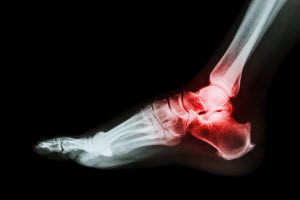According to the Bureau of Labor Statistics, tendonitis causes more than 70,000 people to miss work per year. This is just one of many reasons why it is important to understand the symptoms of tendonitis so that you can avoid not only the pain but the inconvenience it...
LATEST BLOGS
Husband and Wife of 54 Years Undergo Joint Replacement Surgeries On The Same Day
Premier Orthopaedics surgeon, Dr. Jonathan Garino, performed back-to-back procedures on a couple who have been married for 54 years! They shared their same-day surgery journey at the MUVE Center with @6ABC. Watch the incredible story below. Read the full ABC6 story...
What are Non-Surgical Treatment Options for a Herniated Disc
The spine consists of 26 bones called vertebrae and between them are cushion-like pads called “intervertebral discs”. The discs serve as shock absorbers for the vertebrae and help provide stability to the spine. When one of these intervertebral discs loses its normal...
The Different Types of Osteoporosis

Osteoporosis is one of the most common conditions in the U.S., affecting approximately 8 million women and 2 million men. This condition is a skeletal disorder that makes bones weak and more prone to fracture. While normal bones can handle some impact, bones weakened from osteoporosis can break from everyday activities and minor falls.
Bone is constantly regenerating and in a young body, new bone is created faster than old bone is broken down, causing bone mass to increase. But after a person’s twenties, bone mass is lost faster than it’s created. In a body with osteoporosis, more bone mass is lost than can be replaced and bones are brittle and weak as a result.
While osteoporosis can affect everyone, there are some people who are more at risk than others. There are two different types of osteoporosis. Understanding these types can help you identify if you’re dealing with this condition, allowing you to treat it as soon as possible.

Type I Osteoporosis
Also known as postmenopausal osteoporosis, this type generally develops in women who have gone through menopause and have decreased levels of estrogen. This leads to an increase in bone resorption, meaning the bones lose structure, and there is a decrease in the amount of trabecular bone.
Type I osteoporosis typically occurs in women between the ages of 50 and 70 and is not common in men. When the strength in the bone decreases, it leads primarily to wrist and spinal fractures.

Type II Osteoporosis
Type II osteoporosis is also known as senile osteoporosis. This condition usually occurs after the age of 70 and is twice as common in women as in men. Like type I osteoporosis, type II osteoporosis causes the trabecular bone to thin. However, unlike type I, type II is known to lead to hip fractures.
Understanding Osteoporosis
It’s difficult to identify if you have osteoporosis because symptoms don’t usually appear. Typically, people who suffer from osteoporosis aren’t aware that they suffer from the condition until they fracture a bone from a minor fall or daily activity.
The good news is that osteoporosis can be treated if it’s caught in time. If you’ve experienced an unexpected fracture after a minor injury and think you could be dealing with osteoporosis, be sure to contact your doctor immediately.
Your doctor will perform an examination, evaluate your medical history and run diagnostic tests, then he or she will determine whether or not you suffer from osteoporosis and discuss treatment options with you.
Osteoporosis Prevention
While osteoporosis is not completely unavoidable, it’s never too soon to start thinking about your bone health and adopting habits that can strengthen your bones to help you prevent this condition.
One of the most important factors in maintaining bone health is diet. Incorporate fruits and vegetables that contain calcium and vitamin D into your diet. Your body needs calcium for strong bones and your bones need vitamin D to absorb calcium. Take a multivitamin daily or add eat the recommended daily servings of fruits and vegetables.
Exercise is also important for bone health. Speak to your doctor about a workout regime.
